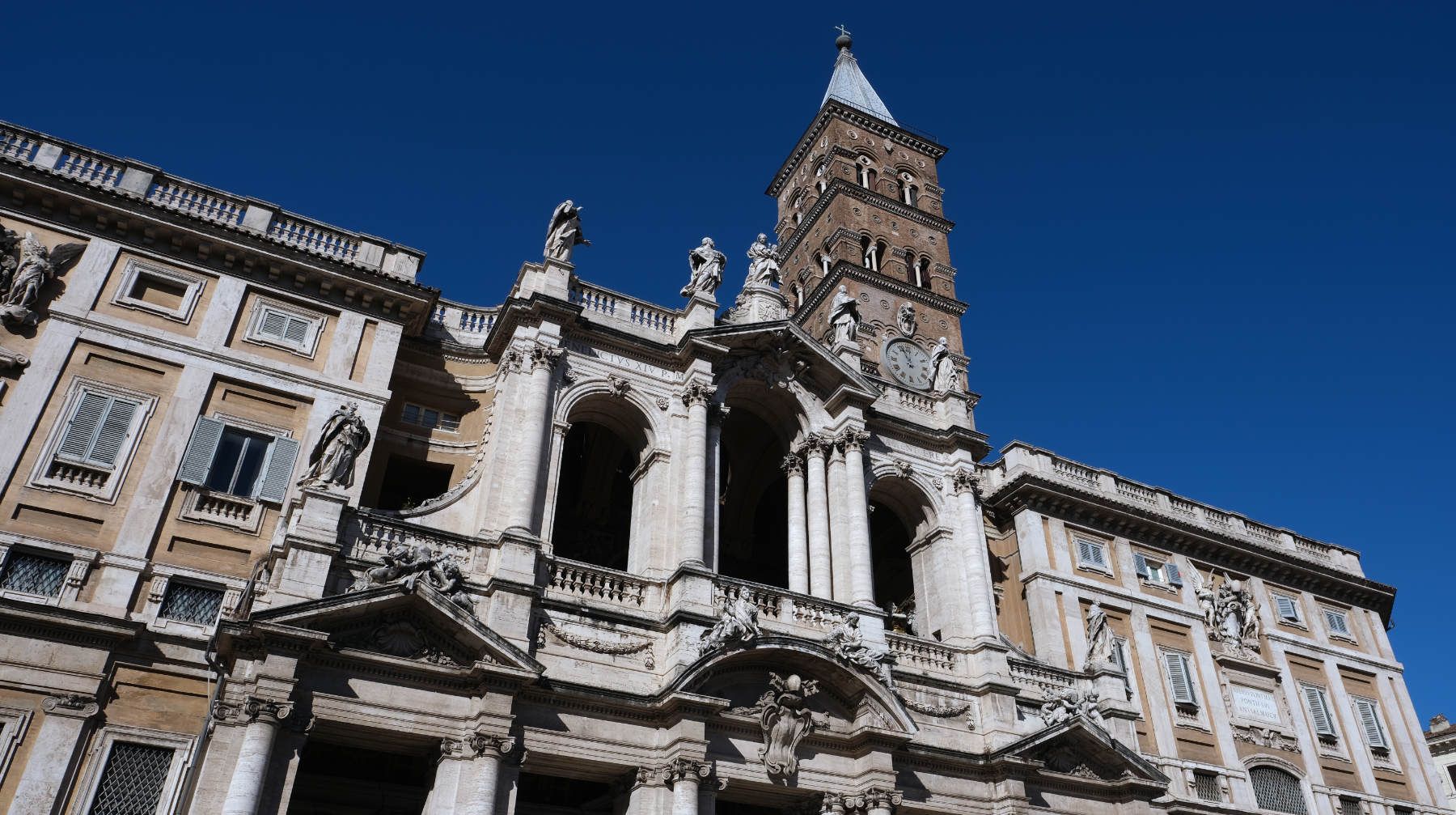
Facts
Built: after 431
Other names:
- St. Mary of the Snows
- St. Mary of the Crib
- Liberian Basilica
- The Bethlehem of the West
Must-Sees
- Triumphal Arch Mosaic: Christ's Infancy
- Apse Mosaic: Coronation of Mary
Prayer Spots
- The Nativity Chapel
- Image of Salus Populi Romani
- Statue of Regina Pacis
"Our Lady of the Snows"
This Basilica is known as the Basilica of St. Mary of the Snows. Why?
The legend goes that during the time of Pope Liberius, a wealthy Roman man named John and his wife, who had no children, promised to give their possessions to the Virgin Mary. They prayed for guidance on how to honor her. One night, they both had a vision of the Virgin Mary and were instructed to build a basilica in her honor where snow fell on the Esquiline Hill in Rome. When snow did indeed fall on August 5, 356, Pope Liberius marked out the exact location where the basilica was to be built. The basilica was then constructed on that very spot.
The first recorded mention of this supposed miracle was after the year 1000. The legend may have been implied in the Liber Pontificalis, which stated that Pope Liberius built the basilica near the Macellum of Livia.
Triumphal Arch Mosaic
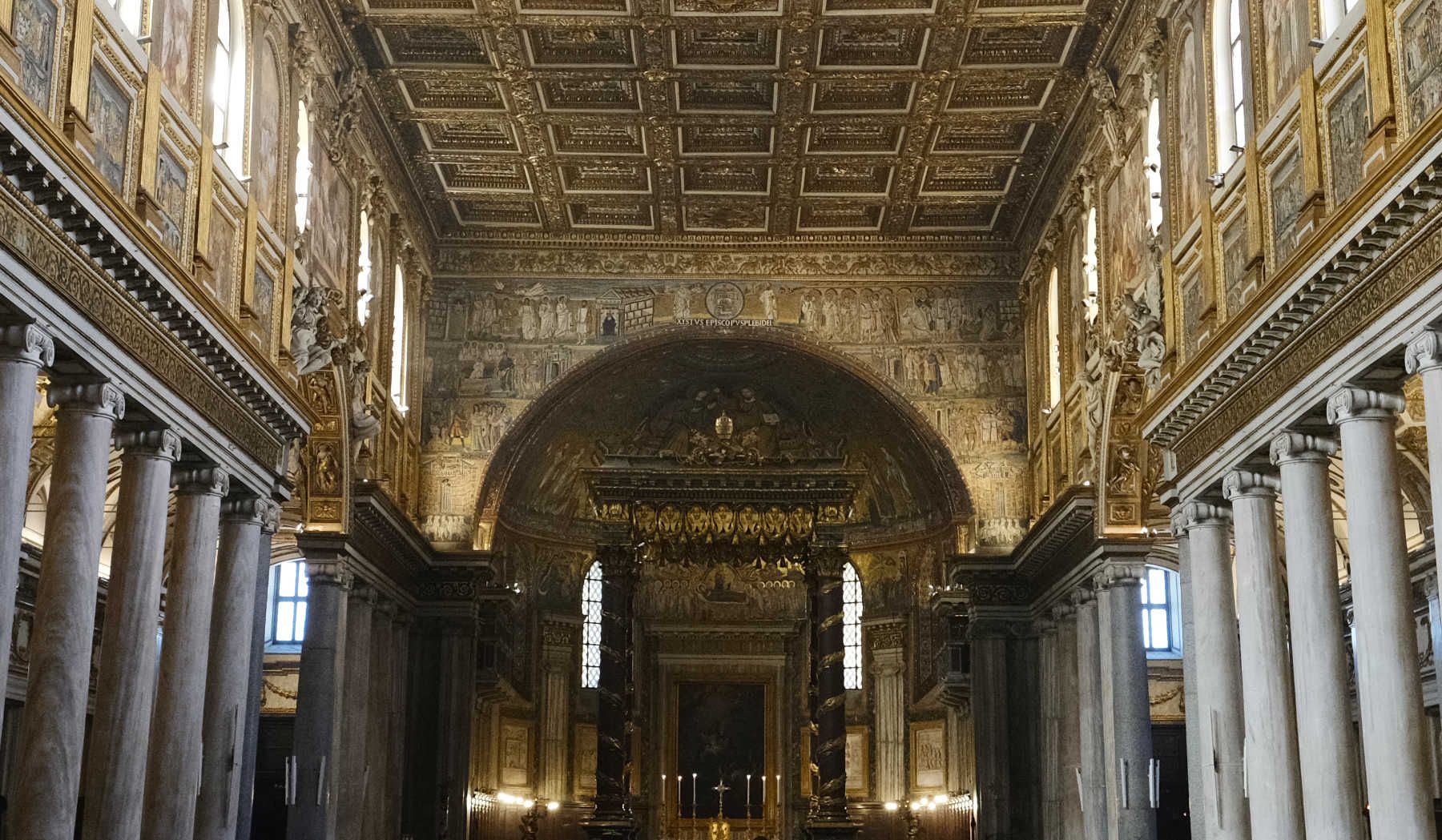
Date: 5th century
The mosaics in this basilica are some of the oldest depictions of the Virgin Mary. They served as models for future representations. Their purpose was twofold: to glorify Mary and to show how the Old Testament foreshadows the New. These mosaics were designed also to project the grandeur of Ancient Rome onto Christianity.
The Triumphal Arch Mosaic depicts scenes from Christ's infancy. At the top, a cross symbolizing Christ is enthroned between Peter, Paul, and four animals representing the Evangelists. From top to bottom on the left side, we see: (1) Annunciation; (2) Epiphany; (3) Massacre of Innocents; (4) Jerusalem. On the right side, we see: (5) Presentation at the Temple; (6) Flight into Egypt; (7) Herod and the Magi; (8) Bethlehem.
The twelve sheep at the bottom symbolize Israel’s twelve tribes and the twelve apostles. In the façade mosaic of the Basilica of St. Paul Outside the Walls, Bethlehem and Jerusalem are also depicted (albeit in reverse order).
Nativity Chapel
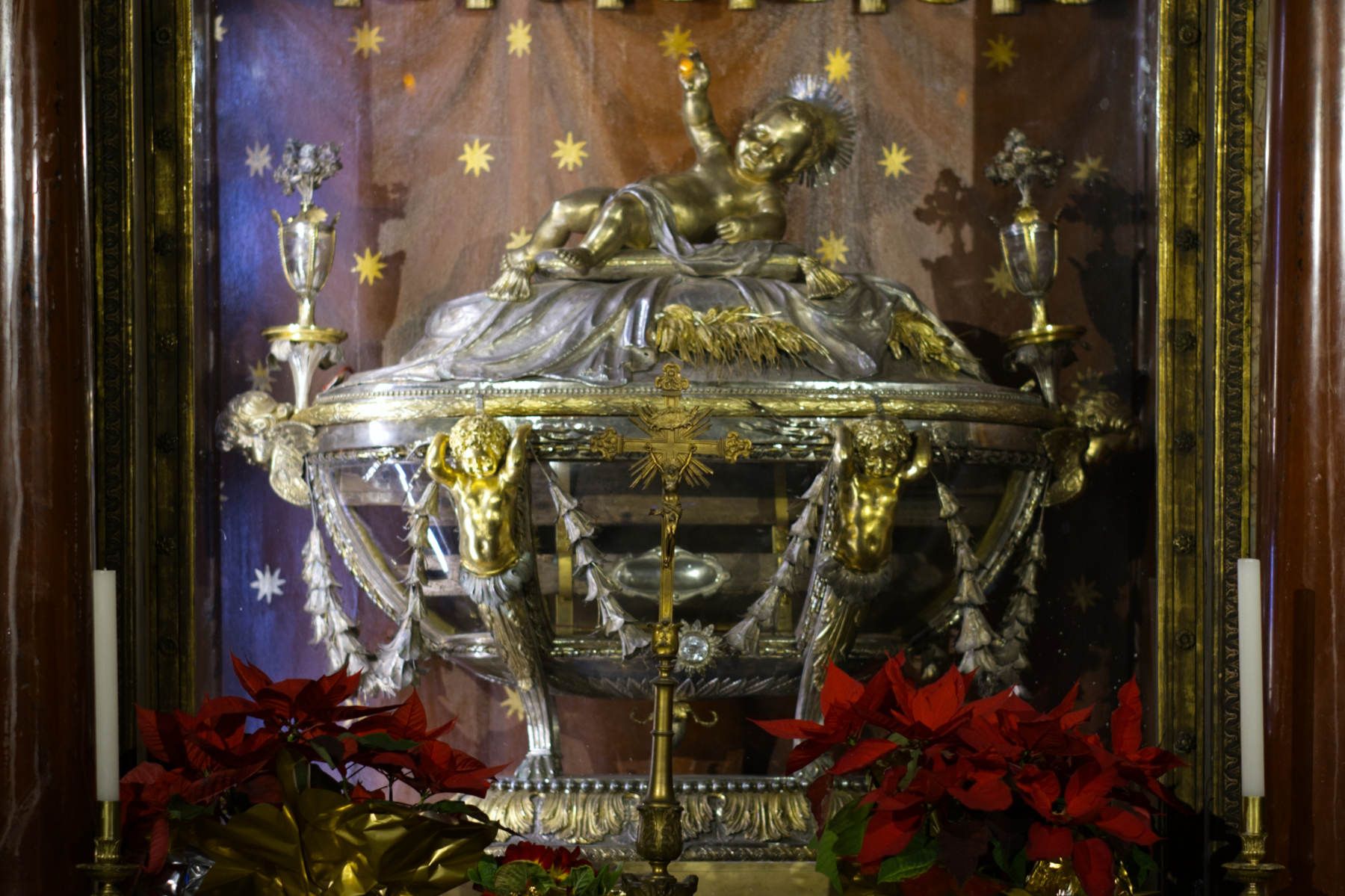
Date: 7th century (with further reconstructions)
The Basilica of St. Mary Major is also called St. Mary of the Crib because under the altar is a crystal reliquary that houses wooden fragments of the Crib where baby Jesus was laid. Back in Bethlehem, the Crib was highly revered by Christians. They protected it until the 7th century when it was brought to Rome after the Muslims conquered the Holy Land.
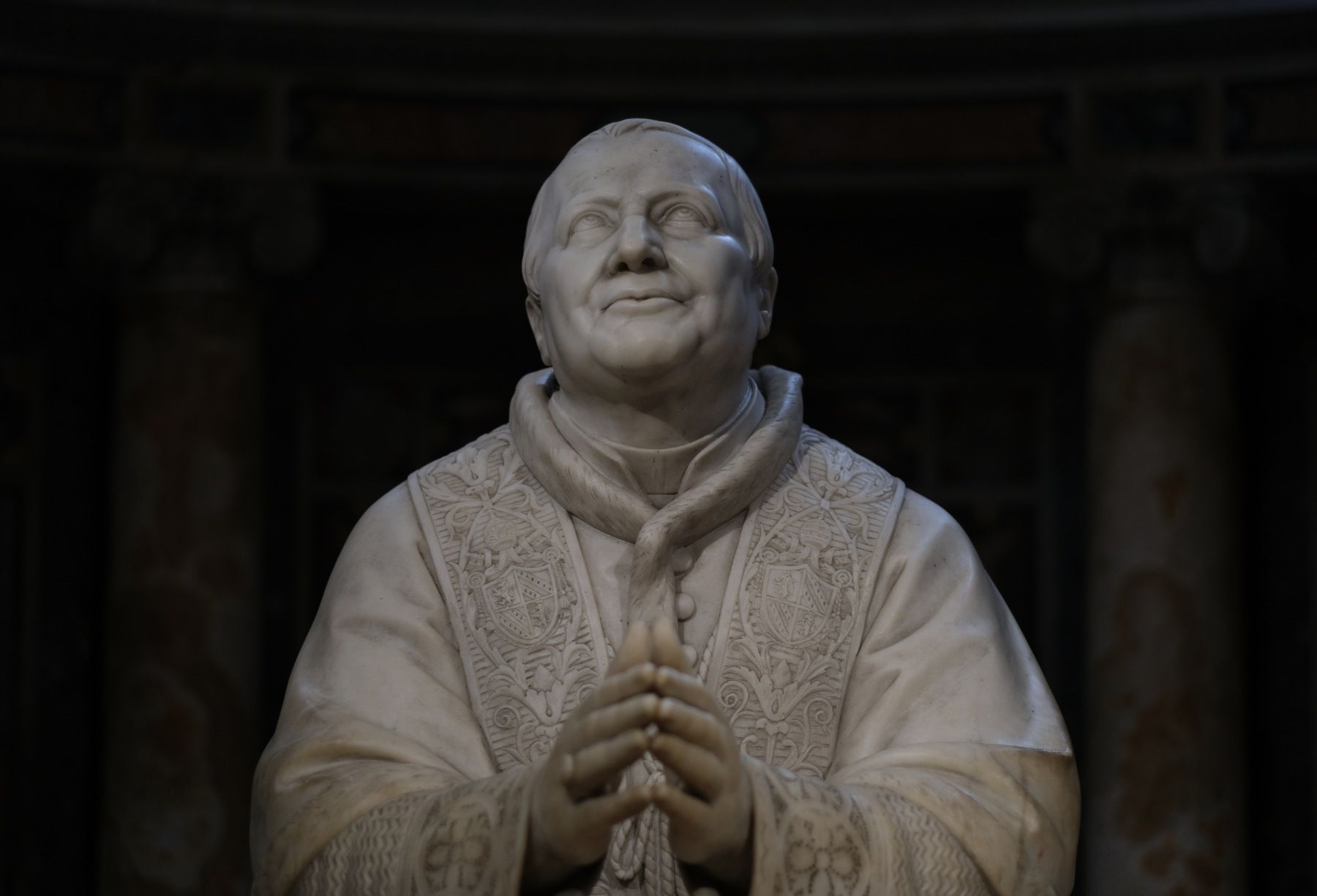
Visitors who come to see the humble crib of the Savior are inspired by a statue of Pope Pius IX kneeling before the ancient wooden pieces. The statue serves as an example of his devotion to the Holy Crib, which motivated him to commission the crypt chapel. His coat of arms is visible above the altar as a testament to his contribution.
Apse Mosaic: Coronation of Mary
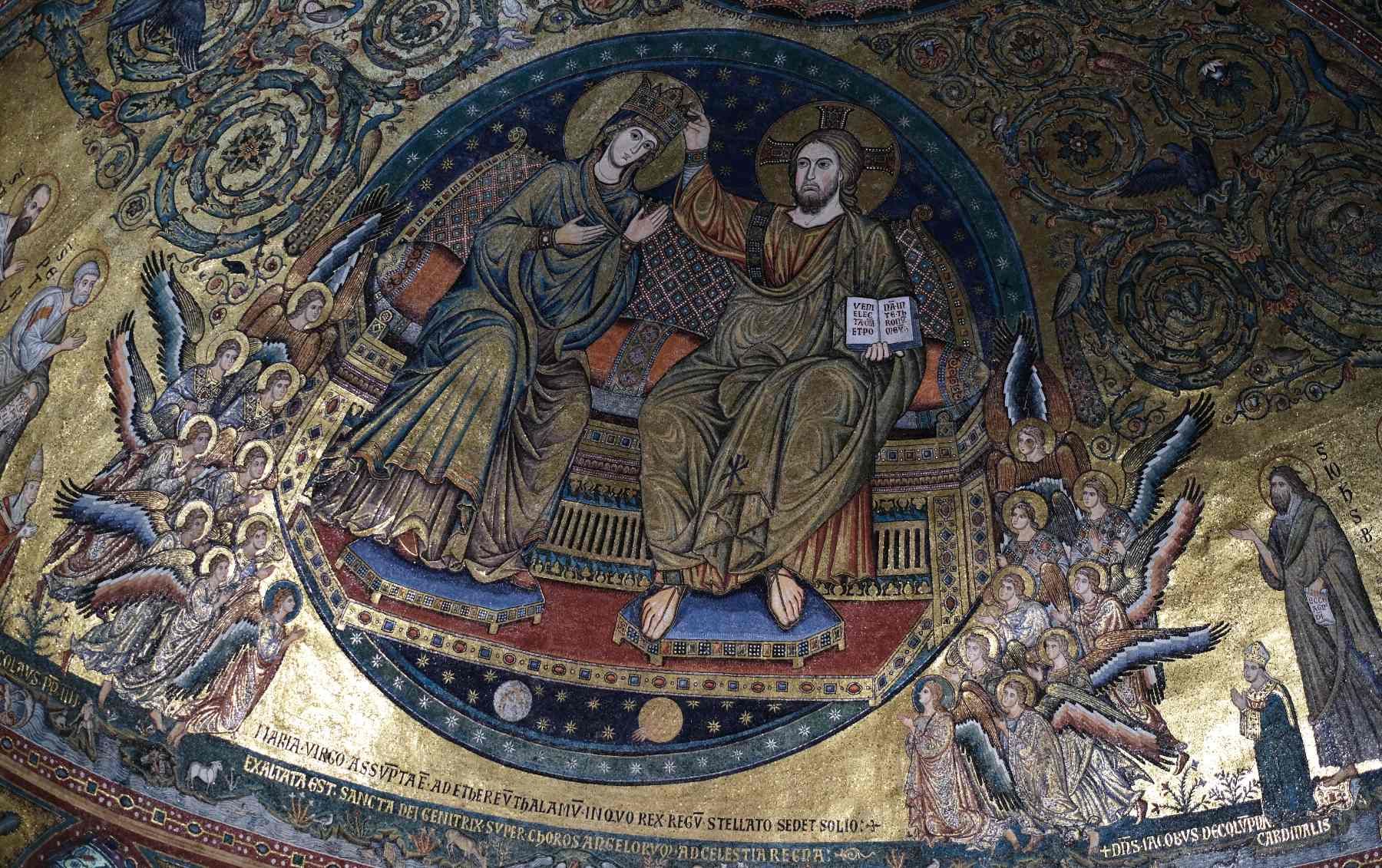
Date: 13th century | Artist: Jacopo Torriti
This mosaic represents the Coronation of Mary. Five scenes from Mary’s life are depicted below (from left to right): the Annunciation, the Nativity, the Dormition, the Adoration of the Kings, and the Presentation in the Temple.
In the center of the composition, both Christ and Mary, dressed in gold, are seated on a large oriental throne. Christ holds a book containing the words addressed to his Mother:
Come my chosen one and I will place you on my throne.[1]
He is placing a jeweled crown on Mary's head with his right hand, while Mary turns towards him and raises her hands in the gesture of an intercessor.
Standing from left to right are Sts. Francis of Assisi (with his stigmata), Paul, and Peter followed by Pope Nicholas IV (a Franciscan Pontiff who commissioned the mosaic). To Christ's right stand Cardinal Giacomo Colonna (who paid for the mosaic), followed by Sts. John the Baptist, John the Evangelist, and Anthony of Padua.
Salus Populi Romani
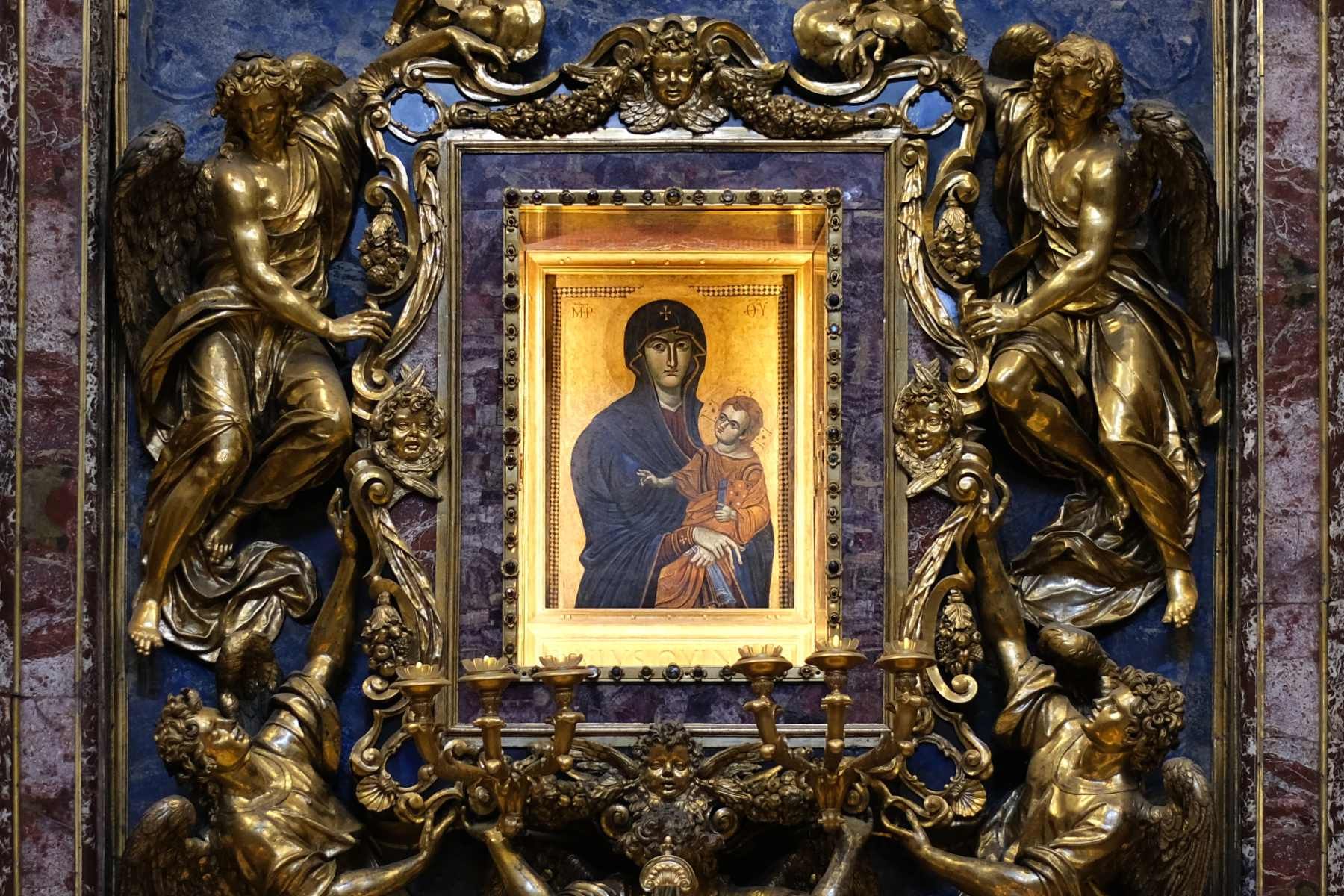
Date: 9th–12th centuries
The icon of Salus Populi Romani—the salvation of the Romans—is the most beloved Marian icon in Rome. It dates back to the time period between the 9th and 12th centuries. It is located in the Pauline Chapel, built by Pope Paul V. Fr. Eugenio Pacelli, who would eventually become Pope Pius XII, celebrated his First Mass here in 1899.
This icon shows Jesus resting lightly on his Mother's left arm while blessing the people with his right hand. Jesus also looks at Mary. He holds a book in his left hand and looks up at his mother who is looking at the people. Unlike other similar icons where Mary's right hand points to Christ, in Salus Populi Romani, her right hand is crossed over her left, gently embracing the child. Mary looks at the viewers, drawing them to contemplate her divine Son. The Greek letters in the background represent the abbreviation of “Mother of God,” a Marian title confirmed by the Council of Ephesus (431).
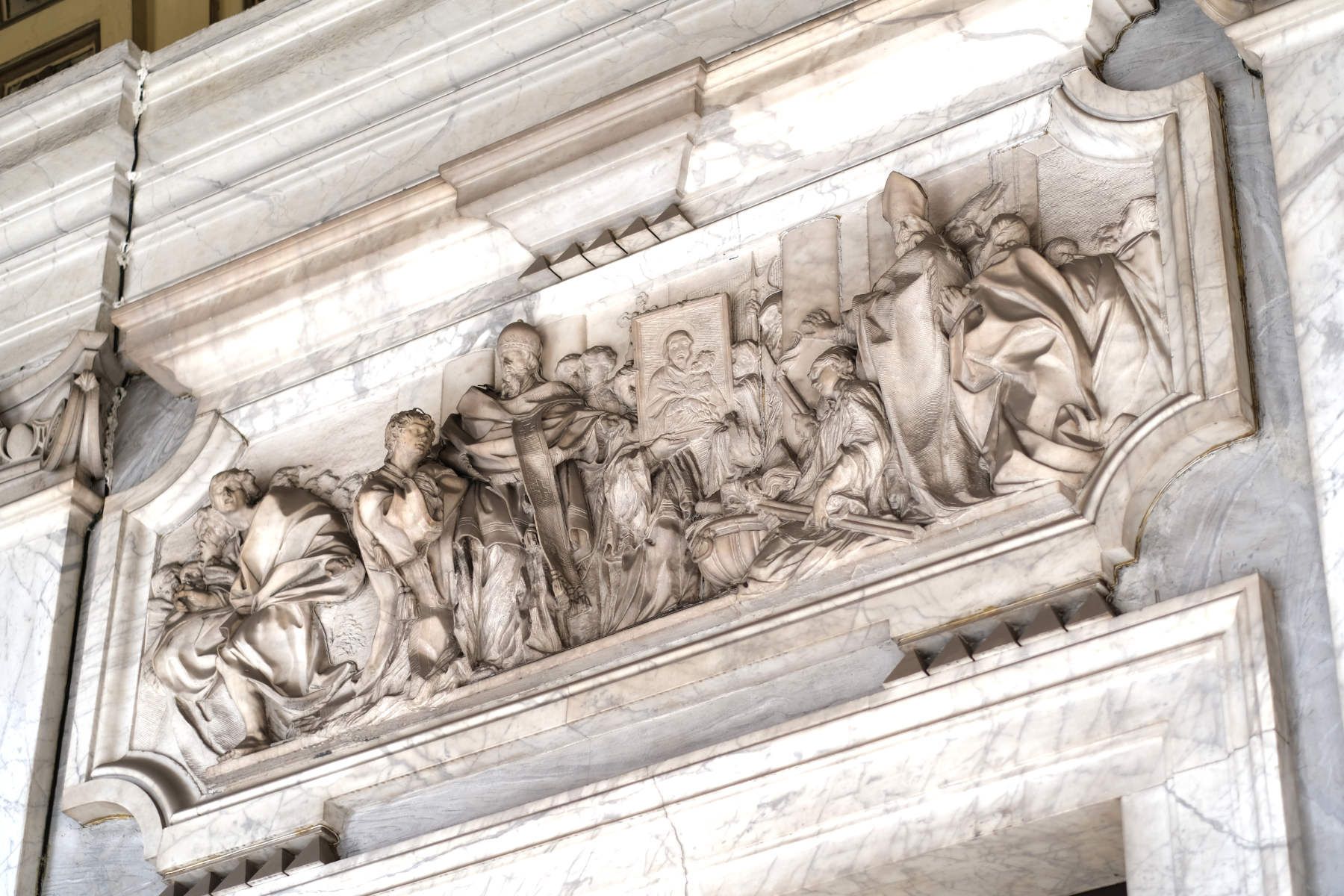
Salus Populi Romani is associated with several miracles. During the pontificate of St. Gregory the Great (590–604), a deadly plague struck the people of Rome, wiping out entire families. The Pope fervently prayed to the Blessed Mother. During the Easter festivals, he carried her image in a solemn procession.
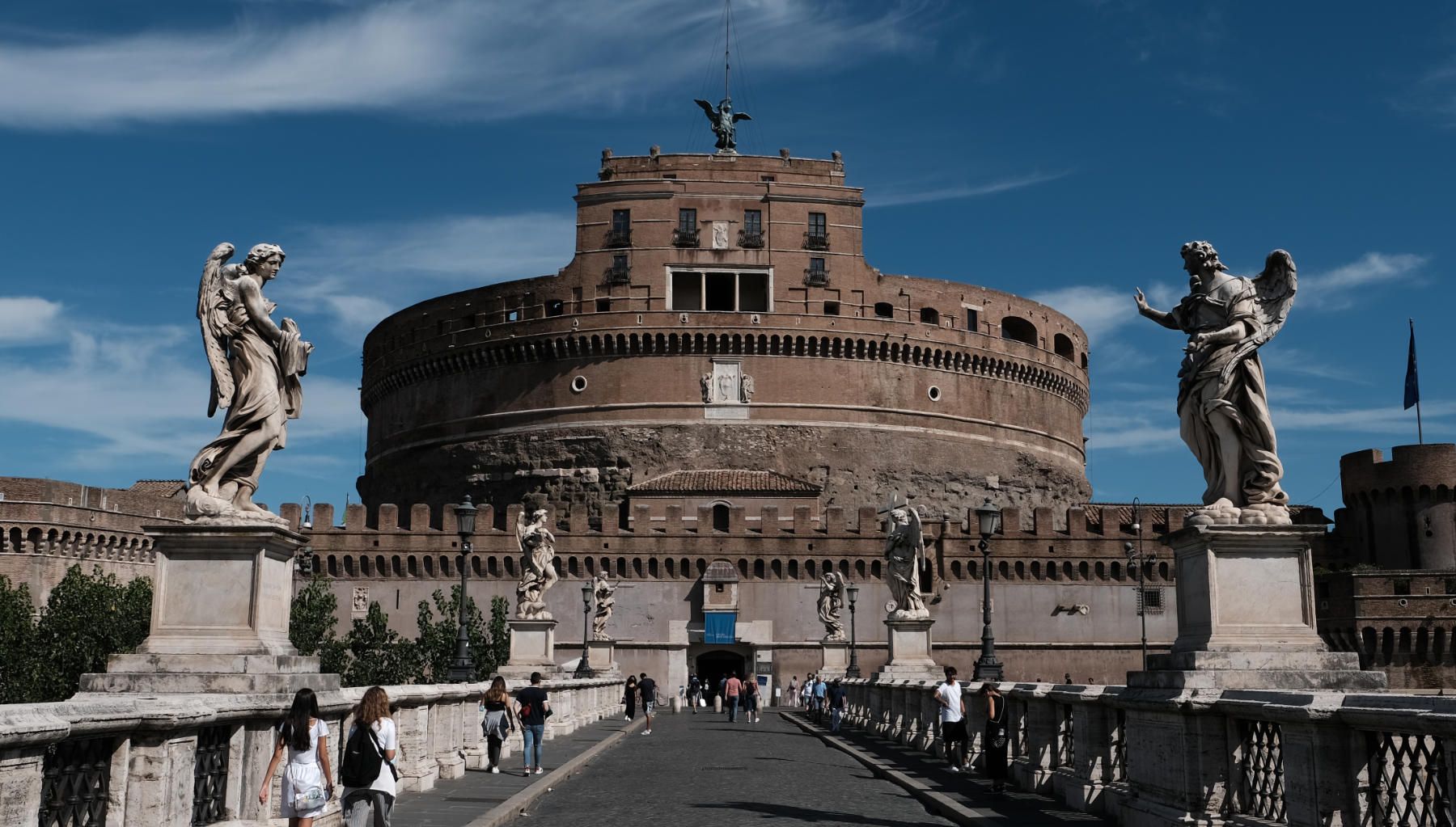
As they arrived at Hadrian's Mausoleum (now known as Castel Sant'Angelo), an angelic choir was heard singing the joyful Resurrection hymn of Regina caeli:
Queen of Heaven, rejoice, alleluia! / For He whom you did merit to bear, alleluia! / Has risen, as he said, alleluia!
Without hesitation, Pope St. Gregory added:
Pray for us to God, alleluia!
After he spoke these words, an angel, believed to be St. Michael, appeared above the Mausoleum and replaced in his scabbard the sword of vengeance he had held over the city.
Statue of Regina Pacis

Date: August 4, 1918 | Artist: Guido Galli
Pope Benedict XV commissioned the statue of Regina Pacis, the Queen of Peace, to ask the Virgin for an end to the First World War, which he called a "useless slaughter." This war ended on November 11, 1918.
Mary sits on a marble throne with her left arm raised, ordering the end of the war. Her face is saddened by the horrors of war. With her right hand, she holds the Baby Jesus, ready to drop the olive branch, a symbol of peace. On the pedestal, a dove eagerly awaits the falling of the olive branch to bring peace to humans. There are also flowers representing the blooming of new activities when peace returns.
The First Known Nativity Scene

Date: late 13th century | Artist: Arnolfo di Cambio
The Nativity Chapel once contained at least six marble Nativity statues commissioned in 1292 by Pope Nicholas IV, the first Franciscan pope. He was inspired by St. Francis of Assisi, the creator of the first living Nativity in Greccio, Italy, in 1223.
While this is not the first depiction of Christ's birth in Christian history, it is the first Nativity scene in the form we know today. Five of the marble statues in the Nativity scene are completely original to the 13th century. They were present when St. Cajetan received a vision of the Child Jesus in the Nativity Chapel on Christmas night in 1517 and when St. Ignatius of Loyola offered his First Mass in this chapel in 1538.
From the Antiphon for the Common of Virgins: "Veni electa mea et ponam in te thronum meum, quia concupivit Rex speciem tuam. Et pulchritudine tua intende prospere procede et regna."